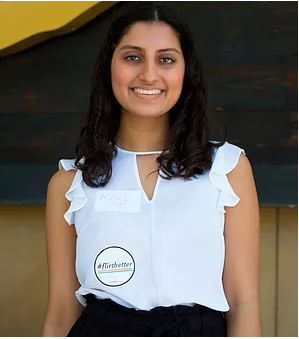
Photo courtesy of Flickr
Sexual harassment is unsettling, no matter what form it may take. Catcalling on the sidewalk or muttered remarks toward a female coworker stand out as different examples, yet both warrant the same amount of attention when it comes to objectification of another, particularly for women. When it comes to high school, however, some of those lines are either not yet defined or are blurred — teenage boys will pressure female peers into sending them nude pictures of themselves (referred to as “sexting”) in a means to “flirt” with them. Quite often, said girls will comply, not thinking entirely about whatever barriers they may have for themselves or whether any of this behavior is crossing a delicate line. And, also often, the consequences of photos possibly being sent around school or becoming the subject of ridicule become all the more real.
Even so, a trend is occurring that is encouraging teenage girls to think twice about communicating with these types of boys, as well as speaking up about any concerns they have for themselves or their fellow community members. I recently had a wonderful conversation with Avni Singh, the founder of Girls Alliance, about the kind of work her organization does, how to approach tackling an issue such as this and the kind of progress being made in empowering young women everywhere to speak for themselves on this issue.

Tell me a little bit about Girl Alliance and the work that you and your ambassadors do.
“Girl Alliance is a by-teens-for-teens group that aims to help teen girls confidently recognize and handle sexual harassment, especially online harassment. We do this by 1) spreading awareness of this problem through our sticker campaign, social media, teen ambassadors and speaking events, 2) innovating resources like our Crush or Creep guide and app (coming soon) to help teens identify the boundary between flirting and sexual harassment, 3) providing teens with comprehensive information about their options if they’ve identified themselves as a victim of harassment, and 4) working with school districts to implement our work into health curriculums.”
How do you approach the issue of sending nudes, or “sexting,” among a teenage audience?
“As teen girls ourselves, we know this problem better than anyone. Each of our initiatives is inspired by real concerns and barriers teen girls in our organization have faced, whether it is lack of awareness, lack of information, lack of resources or lack of community support. To cover all of this, we strive to do two things: spark a cultural shift among teens away from the normalization of sexual harassment and implement systemic solutions in how schools handle reporting and the teaching of healthy relationships.”
“We know convincing teens to change the way they think about sexual harassment is hard. That’s why, with our social media, sticker campaign and teen ambassadors, we strive to make it easy for teens to show their support for our mission. We strive to make fighting sexual harassment normal and cool.”
“We also actively encourage feedback from peers, teachers, advisors, business leaders and social workers to create the most inviting and effective solutions.”

The founder of Girl Alliance, Avni Signh, and her team want to change the way online sexual harassment is treated and help teen girls become more confident in themselves. (Photo taken from speaker’s website with permission).
Do you think more is being done about the issue now than in years past, or is the opposite true?
“I started Girl Alliance one year before the #MeToo Movement. I was terrified to share with the world what I wanted to do, how I wanted to help girls like me and my friends, because talking about sexual harassment was still so taboo. And then, with the #MeToo Movement, we began having national discussions about the topic of sexual harassment and assault. It was amazing to see an issue that has historically been ignored suddenly be in the spotlight. Yet, teenagers were still constantly left out of those conversations even though what is being said now will set the cultural standard for our generation.”
“I think, socially, America is more willing to talk about these issues. However, systemic change still has a long way to go. I’m hopeful that the more discussion we have, the greater the push will be for greater health education, more welcome reporting procedures and fairer justice systems to help victims of every age.”
What kind of impact or conversation do you want to make at events like SXSW? Or have you already seen something at similar events?
“I want our audience to leave with three takeaways: 1) understanding that high school is the breeding ground for future sexual harassers and #MeToo victims, 2) understanding of why current sexual harassment solutions are ineffective, and 3) approaches to unleash the teen voice, thereby empowering teens to strategically address issues they see in their community.”
“We really just want to get people talking about the power of youth activism and entrepreneurship and why that matters. As teen girls, we were able to recognize a problem most adults don’t realize even exists. To create real systemic and cultural change, we must bring teens to the discussion table. I hope to see you there.”
To learn more about Girl Alliance, you can visit their website and read about their work. Signh will also speak at the “Send Nudes? Meet Teens Fighting Sexual Harassment” panel on March 8th at 5:00 pm in The Line–Onyx Ballroom 1.

Comments are closed, but trackbacks and pingbacks are open.